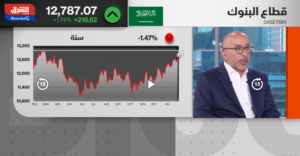As private sector developers continue to battle the cycle of post-handover payment plans and price discounting, concerns continue to ratchet up. This is from the demand side of the equation as buyers either wait for better deals and/or invest in the ready market to get better value for their money.
The consensus wisdom appears to be that either these developers secure inventory loans to buy more time or they resort to distress sales. This thinking ignores the underlying premise of the argument.
Has demand for ready property declined?
Off-plan sales, which fuelled the building boom for the first 15 years of the freehold phenomena, is clearly in decline. This, however, has not meant that there is reduced demand for built-up property. Even though rents have declined, occupancy rates have remained high, courtesy the migratory effect, as increasing numbers of families move to neighbourhoods to capitalise on the “discounting model” as a way to reduce their cost of living.
Reduced rentals implies lower prices on the macro front, which in turn means lower margins for developers, a phenomena that we have seen ripple across the balance-sheets of publicly traded developers. These lower margins have elicited calls for imposing artificial caps on supply, as fears have continued to mount that oversupply will lead to a glut across the board.
However, reduced margins have meant that developers have been forced to
a) sharpen their pencils and become more efficient,
b) delay supply pipelines and reduce the number of launches (this has already happened in the last year or so where the number of launches have been down by more than 50 per cent on a year-over-year basis),
c) enter joint developer agreements with competitors, and
d) offer unique propositions as a way to distinguish their product from competitors by offering cost-effective mechanisms to reduce operating expenses such as smart homes as well as larger spaces to induce buyers.
Not just being applied to brand new launches
At times, this re-design has come midway through the project development cycle, further delaying the supply pipeline, as developers are forced to realign their product offerings with the new market paradigms.
Real estate development is akin to a blood sport; it is clearly not for the faint of heart. Feasibility studies that were drawn up in 2014 clearly do not hold any water anymore, as price points have moved substantially since then, leaving developers to cope with the after effects of lower liquidity and margins.
This has already had a cascade effect on the market, as private sector development activity has diminished. Instead the focus has shifted towards acquiring stalled projects, and/or renewing efforts to shore up liquidity for existing developments through bank financing and/or reducing prices.
These lower prices have been reflected in the indices, which have exaggerated price declines, not accounting for the higher value of primary sales that have post-handover plans inbuilt into their offerings.
Not easy to spot new buying trends
The resulting narrative that emerges is a confused one at best. On the one hand, we have transactional volumes that have increased, even though the number of developers that have benefited are few, as newer community launches attract greater investor interest.
On the other, we have the analyst community that continues to fret about mounting supply pipelines, ignoring the fact that completion timelines keep getting pushed back. In this paradigm, private sector developers that stand to benefit the most will be the ones who increasingly offer bespoke developments, embracing newer technological improvements rather than clinging on to their outdated feasibility sheets.
To be sure, price offerings have to be competitive, implying price drift at the mid-market end, while at the upper end of the spectrum, locational and spatial advantages have to be inbuilt into the product offerings to stimulate demand.
On the macro front, entering into a lower interest rate environment means that there should be an upward shift in the demand trajectory. However, developers who battle this liquidity and price dynamics will be the ones moving aggressively towards meeting consumer needs as a way to overcome the financing shortfall and the uncertainty of the off-plan model.
Regardless of whatever direction that developers move in, what is clear is that the pool of available private sector players will continue to reduce till the point where the market reaches equilibrium levels. Only the most nimble and efficient ones will be left standing as we approach the Expo event.
Sameer Lakhani is Managing Director at Global Capital Partners.





